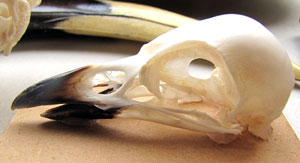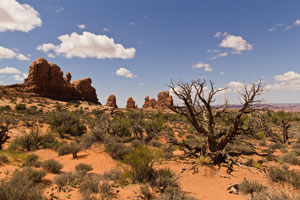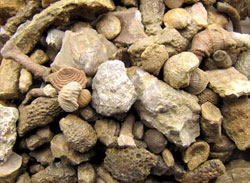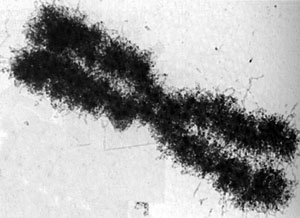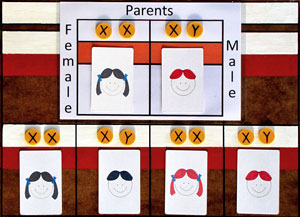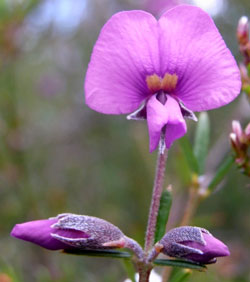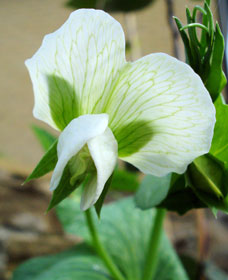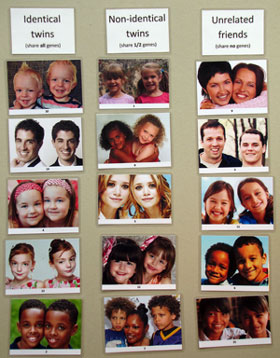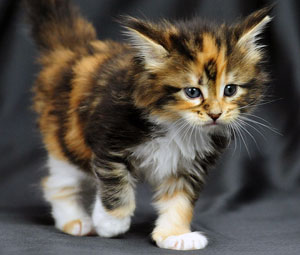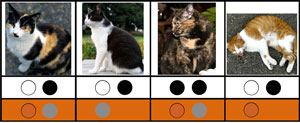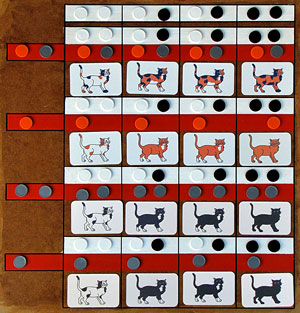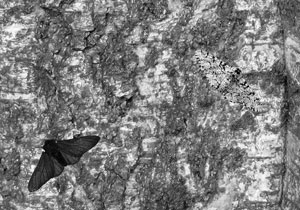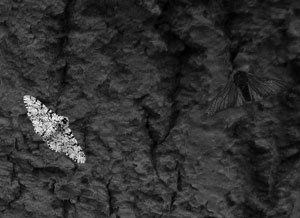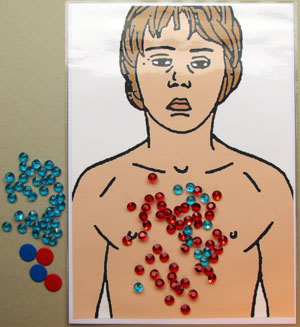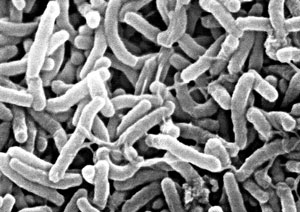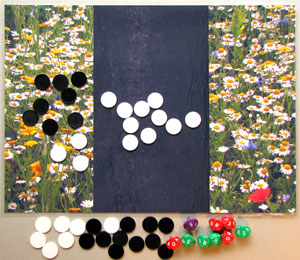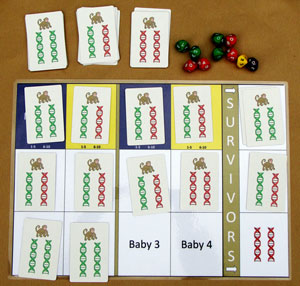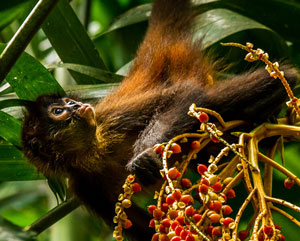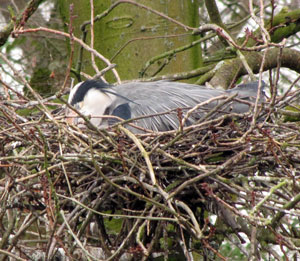|
Two workshops: Adaptation and Natural Selection with a free fossil shark's tooth for every child |
Topics covered: 1. Species - their enormous diversity 2. How species are grouped into hierarchies (e.g. dinosaurs are reptiles, which are vertebrates, which are animals). 3. The tree of life - how animals and plants evolved over millions of years forming a many-branched tree with numerous classes and species, each with distinctive features 4. Adaptation - how many of the features of living things are adaptations to their environments, helping them survive and reproduce in various ways (e.g. flippers helping dolphins and whales to swim, peacocks' feathers attracting peahens, spines protecting hedgehogs from predators).
5. Inheritance and variation - how offspring inherit qualities from their parents, and yet vary slightly from them (e.g. children look similar to their parents, and perhaps have similar skills or personalities) 6. Natural selection - how adaptations evolve, through survival of the fittest - how inherited features benefit some offspring more than others, leading to a better chance of survival and so passing on their genes to the next generation; how this process, through many generations, can lead to new species, and ultimately the great tree of life. Price: £229 per class for a whole day (max. 35 children).
Includes a free shark tooth fossil for each child. These are from the Eocene of Morocco (about 40 million years ago), and superb examples of a successful adaptation. Fossils and dinosaur/reptile toys will also be available for sale at workshops.
To Book The Workshops:
Contact: Tony North Email: tnorth67@hotmail.com Tel: 0161 224 6445
Teachers' comments 'The children were highly engaged and enthralled.' - Y6 teacher 'Mr North's impressive subject knowledge combined with his extensive range of resources enabled him to engage and motivate all pupils from the start.' - Y6 teacher |
|
|
These two lessons are designed to cover the Evolution and Inheritance unit of the Science National Curriculum for year 6. They can be booked individually, but for the maximum benefit you can book them together. If both days are booked, each child will get two free fossils. The focus of each workshop is: Adaptation: The tree of life and adaptation Natural selection: Inheritance and natural selection These fascinating and important topics are brought to vivid life using hands-on activities, scientific puzzles, wildlife films, photos, numerous realistic models of animals and plants, games, and simulations of genetic inheritance and natural selection. These challenging and enjoyable activities will help children grasp these vital concepts and provide a memorable day of learning. Main Activities: Adaptation 1. Review concepts of species and their groupings, using films, photos and team games 2. Learn about evolution and the tree of life by playing two games - placing models of extinct animals on a large board showing the main branches of life over time, and in teams placing fossils on a similar tree. 3. Learn about adaptation via films and photos, and by identifying (in teams) the adaptive features of realistic models of animals and plants
4. Enrich understanding of adaptation through 5 activities: sorting animal skulls and teeth to learn about adaptations for eating; sorting animal models to learn about the evolution of adaptations for living in different habitats (land, water, air); identifying and examining fossils to learn about the evolution of flight; simulating a predator (bird) trying to spot camouflaged prey (moth); and arranging pictures of animals to show transitional forms and the gradual nature of evolution. Main Activities: Natural Selection 1. Learn about inheritance and variation by looking at family photos, and using 'gene' cards, dice, and puzzles to show how features are passed on through generations 2. Learn about natural selection by playing games to simulate this process, and recording data to see how adaptive features can evolve over many generations
Photos from an Adaptation Workshop at St. Richard's in Manchester, Sept 15 |
Introduction Before 1859, many scientists had accepted the theory of evolution - the idea that living things had changed through time, branching into many groups and species and creating the astonishing diversity of life today. The fossil record made it clear that many creatures different from those of today had lived long ago and died out, and yet had left descendants which possessed some of those ancient features. However, it was not understood HOW evolution worked.
Then Charles Darwin published 'The Origin of Species' - a book which changed the world through its revolutionary yet compelling idea that life had evolved through natural selection. Darwin proposed that in the struggle for life, most animals could not survive to reproduce and raise offspring. Any organisms which inherited features which gave them an advantange over others - such as a slightly longer neck in a giraffe, or sharper teeth in a lion - had a greater chance of survival, and so of passing on these features to their offspring. In time these better adapted features should increase in a population, and so eventually new species would arise.
That in a nutshell is the theory of natural selection, now accepted as fact by virtually all scientists. Along with modern genetics it is the basis for a true understanding of life on earth. And yet for many people it is a slippery concept, not fully understood. These workshops, using a step by step process of building the essential conceptual foundations, will help children to properly understand evolution. Watch a short film I made showing the diversity of life on earth. This film is shown at the start of the workshop to inspire children to wonder how such amazing diversity arose. I have spent many hours in parks, zoos and natural areas, filming numerous types of animals, in order to make a wide variety of such films. They will mainly be used to teach children about the many forms of adaptation in the living world. Please note that this means we will need your whiteboard to be functioning well, with good visibility. Watch my 1-minute dragonfly film Learn about the History of Life on Earth
Print your own human evolution worksheet (plotting a graph of brain size and drawing a hominin skull)
Watch a fantastic David Attenborough film about Charles Darwin and the Tree of Life (Youtube) Click here for Natural Selection Lesson Plan |
|
|
Lesson Plan |
||
|
1. Introduction to Evolution (15 minutes) We begin with a question: why are there so many species of living thing? Children watch a short film showing the wide variety of animal species on earth - nearly 2 million known, and according to the latest estimate 8.7 million in all. We discuss the idea that all living species have evolved over a vast period of time: they have changed in order to adapt to their environments. This began about 3.8 billion years ago with tiny bacteria and continues today. This leads us to an astounding fact - all living things are related. The first person to explain how evolution worked was Charles Darwin. This workshop is all about the how and why of evolution - the tree of life, adaptation, inheritance, and natural selection.
Next is a quick look at how animals are classified into groups - which themselves have evolved. We look at a few important animal phyla - cnidarians (jellyfish, corals, sea anemones), molluscs (squids, shellfish, snails), arthropods (insects, spiders, scorpions, centipedes), and vertebrates (fish, amphibians, reptiles, mammals, birds). Each of these groups is very different from the others, but all are related, although their common ancestors lived over 600 million years ago. 2. The Tree of Life (45 minutes) We look at a large painted board (60x200cm, see below) which shows a simplified tree of life - the branches which show the relationships through time between the four phyla we have already looked at, as well as the main branches of vertebrates (fish, birds, mammals, etc. but also dinosaurs, ichthyosaurs, plesiosaurs, and primates). The geological periods and their dates are also marked, going back 660 my (my = million years). For a detailed page on this topic go here. Tree of Life game - click for larger version and see picture below To learn about the tree and the periods of earth's history, children play a game: they are given a model of a prehistoric animal such as a dinosaur or ammonite, as well as real fossils. They are told its age in millions of years, and they must place it on the board in the right place - the right period and the right branch. There follows a short quiz to enrich understanding - for example working out the period in which a type of animal first evolved (e.g. dinosaurs in the Triassic), or the ancestral history of modern groups (e.g. humans are apes descended from primates, then from mammals, reptiles, tetrapods, and fish). Finally children work in their 8 teams with their own tree of life picture (click photo above). They must place 6 fossils (dinosaur bone, trilobite, ammonite, shark tooth, coral, crocodile tooth - see photo below) on the tree in the right place, and answer some more questions about the tree. This will enrich their understanding of the history of evolution. Click for larger version
Ammonite, Dactylioceras commune, from Whitby: 190 my
Trilobite from USA: 500 my, and crocodile tooth: 80 my 3. Adaptation (45+ minutes) Why do species have their particular features? Why have birds evolved feathers, and fish fins? We now look at adaptation - the countless ways in which animals have changed through evolution to survive and reproduce in their environments.
Spoonbill - it swishes its strange bill through the water, sensing and grabbing food
First we watch 3 short films (which I have made myself). These illustrate a few of the most important kinds of adaptation - for feeding, moving, and sensing. After each film we discuss the various ways in which animals have adapted for that purpose. Then children (or the teacher) can choose two or three more activities to learn about other types of adaptation. Options: a. Film about courtship and mating (including shots of animals mating such as the damselflies below) b. Film about raising babies
c. Camouflage game - look at photos and try to spot the animal, whether predator or prey. Spot the spider (click for larger version) d. Mimicry game - look at photos of animals (butterflies, frogs, wasps). Try to work out whether they belong to an unpalatable (poisonous) species, or are palatable mimics which have evolved to look like the unpalatable species, so as to avoid being eaten.
Monarch butterfly - tastes bad to predators
Is this a Monarch, or a Viceroy, which mimics the Monarch? e. Evolution of Sight - watch a film to show how eyesight evolved first in trilobites with simple compound eyes. The film shows how the underwater world would have appeared, as a simple mosaic without colour. Then compound eyes evolved with more resolution, as well as colour perception, as we see in modern insects. How flowers appear to a bee We then watch a film and try an experiment - compare how a bee sees the world (with 7000 lenses per eye) to how a dragonfly sees it (29,000 lenses per eye). What sort of things can these two animals see? Why does the dragonfly need so many lenses? f. Evolution of Colour Vision - watch a short film to show how animals at first saw without colour, and then how the world looked different when colour vision evolved. Why would this be a useful adaptation? At the time of the dinosaurs, mammals were nocturnal (to avoid being eaten!) and so lost colour vision (which does not work at night and may actually impair night vision). The film shows how a cat sees the world at night - much more brightly than we do. Night vision of a human (top) and cat (bottom) Colour vision in primates About 30 million years ago, primates regained full colour vision, which is why we have it but most mammals do not. We try an experiment to try to learn why this happened - comparing photos of fruit trees with fruit which is red when ripe, and leaves which are red when younger and juicier. A cherry tree as a colour blind monkey would see it (top) and as we see it (bottom) - click for larger version If you want to do option 2 in the Natural Selection workshop, the simulation of how colour vision evolved in monkeys, then we will do this colour vision activity. 4. Adaptation Model Activity (20-30 minutes) In 8 small groups, children look at 4 models of animals or plants, with information sheets provided, and identify some of their adaptations (e.g. the long neck of a giraffe for reaching leaves). They discuss them in their teams and present 1 or 2 of these animals to the class. Some of the models used in the workshop - click for larger version Lesson plan continues in the next column →
Gregor Mendel, 1822-1884, founder of modern genetics |
5. Adaptation Activities (90 minutes including explanation and discussion)
After lunch children do 5 activities in their 8 groups. They use models, fossils, skulls, teeth and photos to enrich their understanding of adaptation and start them thinking about natural selection.
a. Habitat (16 minutes) Children arrange 21 models of animals on a board according to their habitat (land, air or water). They identify adaptations for living in these habitats, and draw conclusions about the challenges of these environments. They also look at the relationship between size (ranging from ants to blue whales) and habitat.
b. Camouflage Experiment (16 minutes) Children reenact the famous case of the evolution of the peppered moth. In the early 1800s this moth was a light, mottled colour (see below), camouflaged against the lichen-covered bark of trees in England.
By the end of the 19th century, in areas like Manchester, this form of the peppered moth had been almost entirely replaced by a darker mutant (see below). The reason was that industrial pollution had darkened the trees, so the lighter moths were no longer camouflaged and were being eaten by birds.
Children pretend to be the bird predator and try to spot the two varieties of moth on light and dark tree backgrounds. By comparing the numbers of moths seen, they should be able to work out how evolution occurred in this situation. In the Natural Selection workshop we return to this moth as a famous example of evolution in action.
c. Transitions (16 minutes) According to Darwin's theory, species evolve gradually, so there are 'transitional forms' along the branches taken by each type of animal. Scientists have found many fossils of these transitional forms. One famous case is of the various hominin species, such as Australopithecus and Homo erectus, whose brain sizes and features such as height and brow ridge show a gradual change over time. Another example is tetrapods - the first four-legged animals - and the fish with leg-like fins which preceded them, most famously Tiktaalik.
Tiktaalik, about 375 mya
Children learn about transitions by ordering pictures of animals in 5 groups (tetrapods, dinosaurs, horses, whales, and humans). As an extension for another day, you can print this activity: children will make a graph of hominin brain size over the last 3 million years, and try to draw the shape of a Homo erectus skull, given drawings of Australopithecus and modern human skulls.
Australopithecus afarensis - one of our earliest human ancestors (3.2 my)
d. Evolution of Birds (8 minutes) Children examine 3 fossil replicas to learn about how various animals are related to birds, and so how birds evolved from dinosaurs. The fossils are Archaeopteryx (a famous transitional fossil, a 150 my-old flying dinosaur with visible feathers but clear differences to birds such as claws on its wings), Compsognathus (a small dinosaur with a skeleton similar to Archaeopteryx, and which lived at the same time) and a bird (similar to a Rail, from the Eocene period, 50 million years ago).
Children look at features such as limbs, feathers and claws and try to work out which fossil is which (given pictures of the living animal). They then work out the order in which these animals are related to birds, and so draw conclusions about how birds evolved, and why feathers and wings might be useful adaptations.
e. Evolution of Teeth (8 minutes) Children examine animal skulls and teeth, including fossils,and arrange them first by diet (herbivore or carnivore), and then group (mammal vs non-mammal), with pictures to help. They draw conclusions about what sort of teeth evolved for what purpose. As an extension they can also work out that only mammals have differentiated teeth (canines, incisors and molars), and discuss why this might have evolved.
Skulls/teeth used: rabbit skull, fox skull, cat skull, shark jaws, Triceratops tooth, Iguanadon tooth, magpie skull (above), Ichthyosaurus skull, sabre-toothed cat tooth, mammoth tooth. Click here to see them all.
At the end we will discuss children's findings, and fossil prizes will be given for some of the activities.
Alien Evolution Game (30 minutes)
To finish we play a fun game. Each team chooses one of 8 habitats and invents either a predator or prey animal, adapted both to its environment and to other animals. For example a cheetah is the fastest four legged animal with many adaptations to help it chase its prey, such as a very long and flexible spine. However, its prey, the Thompson's gazelle, is also one of the fastest animals on land and has evolved this speed to escape cheetahs.
The twist in this game is that we imagine we have travelled to another planet, so children can create brand new creatures - as long as they are properly adapted (the creature above is from Avatar). They will use marker pens and large sheets of paper to create their animals and present them to the class. With fossil prizes for the best team.
Desert habitat - others in the game are rainforest, savanna, ice cap, mountains, woodland, wetland, and coral reef
Fossils for Sale Over lunch or after school, fossils will be available for sale, at low prices - mostly 10, 20 or 50p, plus a few for £1 or £2. I will also have dinosaur and reptile toys for 50p-£2.
Corals and brachiopods
The focus in this lesson is on the mechanism of evolution - how does it actually work? We look at inheritance and genes in the morning, then turn to natural selection in the afternoon.
These vitally important ideas are difficult, even for adults, so I have carefully crafted activities which will help children and teachers get to grips with them. To bring the concepts to life, and make them more fun, we use photos, reenactments, dice, counters and cards, in a variety of games and simulations.
1. Inheritance (morning session) First we discuss inheritance - how we resemble our parents both physically and in our behaviour and personality.
Game - identify children from their parents. In 8 teams, children try to assign photos of children to photos of their parents (including both famous and non-famous families). We discuss how similar children are to their mothers and fathers, and why this might be.
Genetics - we take a (simplified) look at how inheritance works, by means of chromosomes and genes, which come in pairs (called alleles).
photo of a chromosome - the DNA strands are visible
Sex Chromosomes
We look at how X and Y chromosomes are inherited to determine gender, using cards, counters and dice (see below). Children learn why half the world's population is male and half female, and yet in any one family there may be only boys or only girls - a matter of probability. Each team randomly creates a family of four using dice and we look at patterns across the class.
Genes
Next we focus on genes. Gregor Mendel's experiments on peas showed us how traits are caused by indivisible factors called genes, which come in pairs. One of the pair is often dominant - so a pea flower with a purple gene (P) and a white gene (p) will end up purple, as the purple gene is dominant.
The genotype for this flower is either PP or Pp - both result in a purple colour
The genotype for this flower must be pp (two recessive genes)
Using gene cards and dice we look at how a plant or animal inherits half of its genes from its mother and half from its father, but the halves are randomly selected from all the pairs of alleles. This is why two siblings can be very different from each other.
Optional Extra - Twins
If you wish we can look at twins, and how identical twins share all their genes while non-identical twins share about 1/2 (like ordinary siblings). This might be a good option if you feel the full lesson on genetics is too difficult for your class (see later section on cat colour).
Children play a game in which they sort 3 groups of photos - identical twins, non-identical twins, and unrelated friends. This teaches them how physical appearance is largely inherited, and how siblings can look very similar but also very different, because of the random mix of genes they get from their mothers and fathers. Includes the amazing case of the twins who appear to be of different races.
Lesson plan continues in next column →
|
Inheritance lesson, continued:
Cat Fur Colour
For the rest of the morning session we look at the inheritance of coat colour and pattern in cats. Cat colour is caused by several genes, which combine to produce an end result (the 'phenotype'). For example, a cat with the dominant white spotting gene and one dominant orange gene, if female, will usually be a white tortoiseshell (see below) - usually, because other genes can modify this pattern.
First we look at how the 'white spotting' gene (S) and the 'orange' gene (O) work separately. In each case after a demonstration children work in their groups, first working out the genotype of cats in photos, using counters instead of letters to help make the concept concrete.
As we see in the first cat above, a cat with one dominant white spotting gene and one recessive gene (Ss) will be less than half white (we assume the other colour is black for now). A cat with two dominant genes (SS) will be mostly white. A cat with two recessive genes will have no white (here, all black).
After this the teams use counters and cat phenotype cards to see what possible kittens come from parents with different genotypes. Children answer questions to help them grasp important features of inheritance - namely, how parental genotypes affect:
Next, we look at how the white and orange genes have a combined effect. Again children solve photo puzzles. For example, a cat with Ss and Oo genes will be a tortoiseshell with some white patches (the first cat below):
After this children are taught how to use gene counters and cards to lay out the 16 possible kittens resulting from two parents. The photo below shows the board used by each team - similar to the tables used by scientists to work out gene combinations, known as Punnett Squares. Again teams answer questions about inheritance and variation in offspring. There are fossil prizes for the team which gets the highest score overall.
Mutation
The above activities show children how genes combine to produce offspring which are similar to, but often different from, their parents - and their siblings too. This variation due to recombination of genes is part of what allows natural selection to take place. But on its own, it is not enough.
Our genes have been passed down through millions of generations, back to the earliest animals which walked on land, and the fish which came before them (and all the way back to the first living thing). And yet we are not fish! If genes are copied each generation, how can there be so many different species? Where do new genes come from to create new adaptations?
The answer is mutation. Very occasionally a gene mutates, due to copying errors, radiation, or other reasons. Usually this has no effect. Sometimes it is harmful, and the animal often dies before passing the gene on. However, on rare occasions the mutant gene is helpful - for example it may give a giraffe a longer neck. A mutation such as this is what allows natural selection to work.
2. Natural Selection (afternoon session) Darwin's theory has been described as the greatest scientific idea of all time. In principle it is quite simple - and yet most of us have a shaky grasp of it. In this session children re-enact and simulate natural selection through games, thus getting a concrete sense of how it works. Peppered Moths - Evolution Observed We return to the moth activity from the Adaptation workshop, looking at the data from all 8 groups, to remind ourselves how camouflaged moths were less likely to get eaten. In the early 1800s few dark moths were ever seen. Most peppered moths rested on light, lichen-covered trees, and the black ones tended to get eaten. By 1895, however, nearly all peppered moths found near Manchester were black.
We discuss how, during the industrial revolution, trees grew dark with soot. Children think about how this change might have affected the moths. To bring what happened to life, we carry out a reenactment. Children hold pictures of light or dark moths, shown against the dark background of the polluted bark. A bird (a child wearing a bird hat) 'eats' moths - far more light ones than dark - and so we see how nature selects for darker, better camouflaged moths. The surviving moths then reproduce, doubling their numbers. We repeat this for about 6 generations, and see what happens. Of course the genes for dark colour are passed on, and so the numbers of dark moths increase while light moths diminish. In this way we see how evolution takes place.
We discuss the experiment and try to reach an understanding of natural selection. This process accounts for nearly all of evolution (other processes also cause genetic change, but only natural selection leads to adaptation). Further Simulations Children now run their own experiments in their groups, simulating a real-life case of evolution by natural selection. There are 2 options, depending on the ability of your children, involving simulations of increasing complexity and accuracy in modelling the way genes are inherited. Option 1 - Bacterial resistance followed by Peppered Moth Resistance of bacteria to antibiotics is a major problem in the modern world, with diseases such as MRSA claiming thousands of lives each year. In this simulation we learn about bacteria, how they can cause disease although many are helpful, how they reproduce and mutate very quickly, and how this can lead to bacterial resistance if we misuse antibiotics. Children work in their 8 groups using red and blue gems and a picture of a sick boy to simulate bacterial evolution. We see how infection leads to sickness as bacteria multiply, and how antibiotics can kill off the bacteria within a week or so. However if we do not complete the course of pills, mutations can arise which make the bacteria resistant to medicine. They multiply and can cause further problems - including spreading to other people.
Cholera bacteria It is also important not to take antibiotics when a disease is caused by a virus, as with common cold and flu, because beneficial bacteria will be killed, and the fast multiplication of survivors can lead to harmful mutations. Peppered Moth Having re-enacted the evolution of the peppered moth earlier, children will be ready to take it a step further. In this simulation we introduce the random effects of survival, thus modelling natural selection more accurately. In their groups children use a large photo of a dark tree, black and white counters, and 10-sided dice to carry out the simulation. We begin in the mid 1800s with mostly light coloured moths - 15 white counters, and 1 mutant dark moth - a black counter. Some moths land on the tree and children roll the dice to see if they survive. We assume light moths have a 40% chance of not being eaten by a bird, and black moths have a 60% chance because they are better camouflaged. Each generation of survivors doubles its numbers, and the simulation continues for as long as time allows. One child records the numbers of light and dark moths in each generation and makes a graph. If the task is completed and time is available, there is an extension. Children look at research done in the 20th century to test the theory that the peppered moth evolved due to differential bird predation. Children come up with their own experiment to test this idea. Option 2 - Peppered Moth followed by Colour Vision in Monkeys For the most authentic option, we first do the moth activity above, then the evolution of the primate colour vision gene. This option is challenging and only suitable for children of above average ability. Children use gene cards and 10-sided dice to see how the gene for full colour vision increases in a population over several generations. This occurs because monkeys that can see ripe red fruit or juicy leaves have a survival advantage over those that can't. We assign numbers to this advantage - a 60% chance of survival (to reproduction) of colour-sighted monkeys vs. a 40% chance for colour blind monkeys. First, 'parent' monkey cards are dealt out. There are 2 alleles on each card - a red and green picture of a length of DNA. Two greens means a colour blind monkey; one or two reds means the monkey has full colour vision. By rolling dice, children work out which gene each baby gets from its parents, and so put down the appropriate card (this is something they have already practised with the gender cards - see above). They then roll dice to see how many children of each genotype survive. After all the parents and babies in the current generfation have been dealt and rolled for, children count the survivors of each genotype and record the data. One child makes a graph to show how the percentage of colour-sighted monkeys changes. This process is repeated for as many generations as time allows (about 6). Eventually it will become clear to children that the number of genes for colour vision is increasing. This will help them understand how both natural selection and genetic inheritance work.
Summary and Final Activity For both options we finish with a discussion of what we have learned from our simulations, and see if we can come up with a definition for natural selection. Finally children apply the idea of natural selection to another animal - for example, how brain size might have evolved in humans, big ears in elephants, or nest building in birds. Each team discusses a case and presents it to the class, with fossil prizes for the best presentation.
|
 The Tree of Life Activity - children place animals on the board to learn the evolutionary relationships between groups, the geological periods, and the vast extent of the history of life. |
||





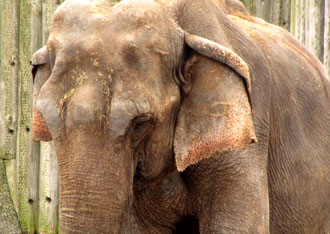

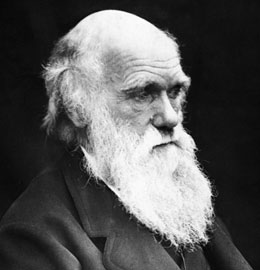
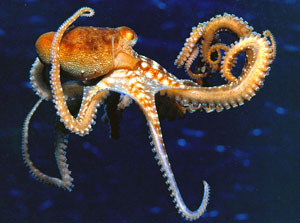


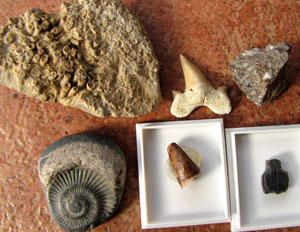
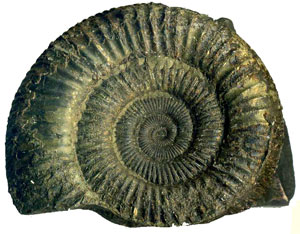

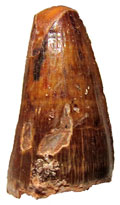
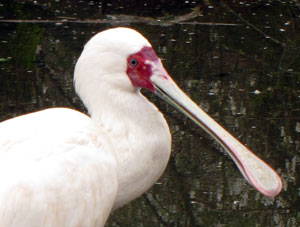
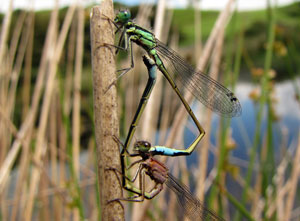
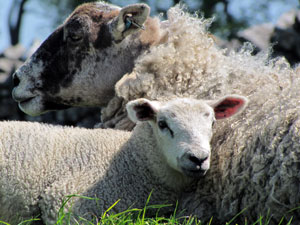
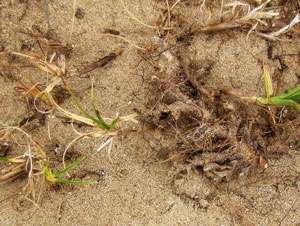
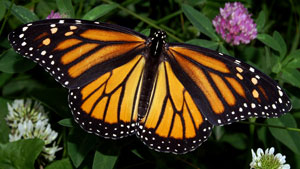
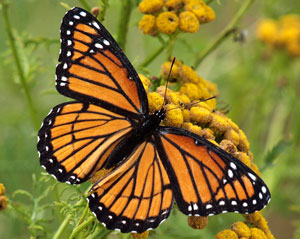
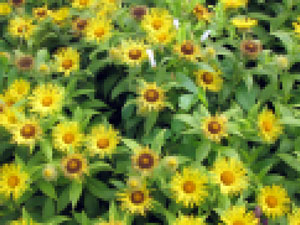

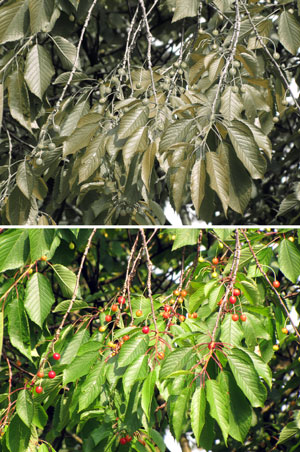

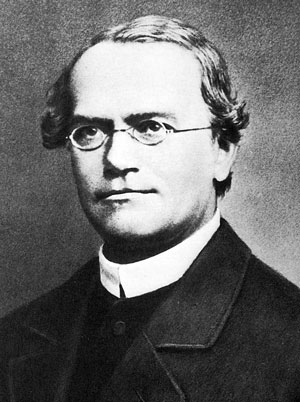
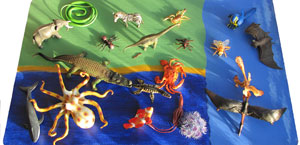
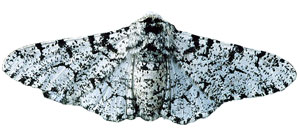
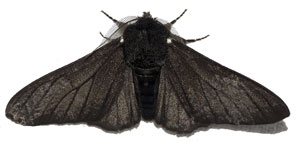
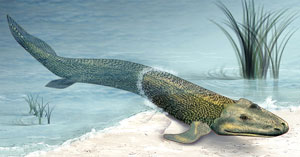
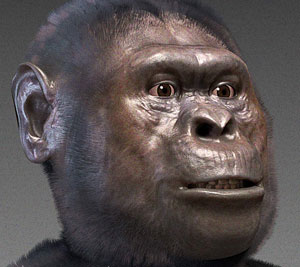
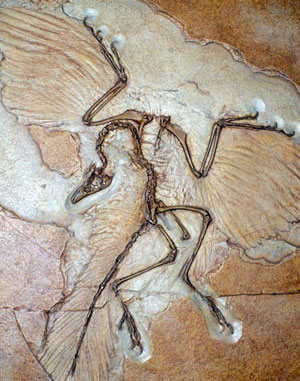 Archaeopteryx
Archaeopteryx
